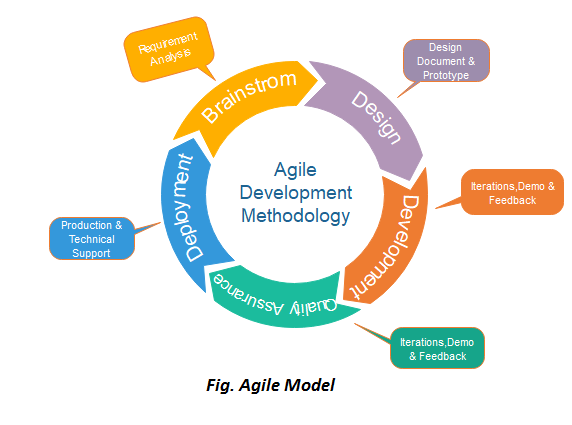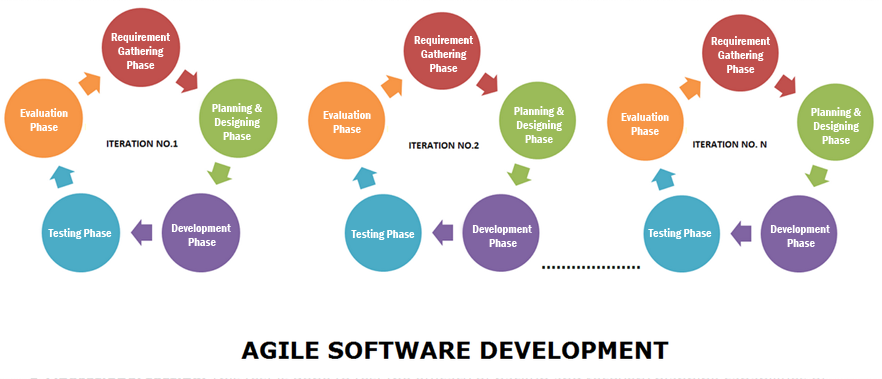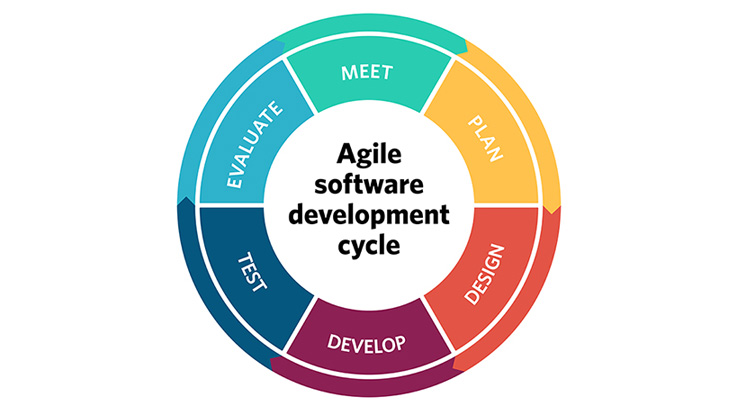If you are a technical person you would be familiar with the terms such as “SDLC” and Agile methodology. SDLC refers to Software Development Life Cycle. In order to fabricate a high-quality software product, today’s technological firms have come up with the concept of practicing agile methodology. This methodology saves a lot of time for businesses as this process consists of releasing the product in a continual manner.
Let us go into detail. By the way, if you want to get any software developed relevant to your business sector you can contact any established software development company.
Table of Contents
What does SDLC mean?

- Analysis of the requirement
- Requirement planning
- Design
- Development
- Testing
- Deployment
These 6 phases are crucial for developing high-quality products. Each phase is inter-dependent and cannot move to the subsequent phase without the completion of the previous phase.
There are many other models as well such as the Waterfall model, V model, Agile, etc.
SDLC aids the companies to save a lot of time when the bug is found at the earliest. As SDLC is a cycle or repetitive process appropriate testing methods could assist in finding the faults and fixing them soon.
What is the Agile model for SDLC?
Each company adopts various kinds of SDLC models. Among them, the popular one is the “Agile Model”. Ongoing iterative developmental and testing stages that include the process of the software development cycle is known as the agile model basically.
Here, development and testing tasks happen simultaneously. Thus, reducing errors and building quality products!
Traditional software development techniques used to consume a lot of time. Due to the software development “time” factor businesses had to wait for so long and in meantime, they were not able to satisfy customers as they wanted.
The old approach is not convenient as the complete development is based on adhering to the initial requirements obtained. In-between, requirement modifications are not permitted. Due to this, the business is not able to serve its customers due to the time lag. This process usually consumes a lot of months which is the negative point. Moreover, the product is delivered after it passes through several stages of testing and processes and then it is handed over to the business.
Hence, modern methodology came up with the new technique – The agile methodology.
The agile model saves time. Let us see how.
When a business, approaches a software company that adopts agile methodology and explains what they actually need the company starts with the software development works.
In the agile process, there is no detail looking into requirement planning and analysis. But requirement planning and analysis are enough to pertain to the scope of the project. Then, the developers start off with the required steps – analyzing the requirements, design and development process, testing, and deploying the changes.
Here, the difference between the traditional and the new way of approaches lies in saving time. Agile method assists in saving time due to the constant testing practices which aid in finding the bugs at the earliest possible time and fixing them soon. As soon as the bugs are fixed and the product re-tested, the changes are deployed to the live system. And these changes are delivered in small batches.
This process actually consumes 2 weeks to one month of time. The cycle or process is repetitive and hence called an iterative process too. Each cycle is known as sprint.
Hence, agile methodology is really of great help to businesses as the changes are deployed rapidly.
Phases – Agile methodology:
-
Commencement of the project:
Project start-up is the initial step where the requirements are considered and many prominent pursuits are taken care of. At this time, identifying the relevant skilled persons and the number of resources required is to be discussed and employed.
-
Plan:
Here, planning of the requirements is done. This can be done by organizing a discussion with the business and then discussing with the team so that the “test plan” is made ready. A story incorporates how the main person or the end-user wants to handle the product and in what way it is going to benefit and so on.
Test plan – releases and sprints.
Release (part of test plan) is divided into many sprints/iterations according to the stories appended.
-
Development:
The developmental phase is the construction of the product and here according to the test plan appropriate developmental activities are started off and the end–product is going to undergo several repetitive testing processes.
Appropriate coding practices by working together with the team would aid to build error-free products.
-
Testing:
Testing the product in order to find faults is the main aim of the phase. Moreover, once the integration testing is completed, QA and User-acceptance testing happen and here end-users can also be involved so that they are satisfied with the product.
Bugs found are fixed by the developmental team by looking into the issue and again testing process takes place to re-check if all is well.
-
Deployment:
Once, the product is ready after undergoing several testing processes it is now ready to be deployed into the live system or production.
If previous releases are to be replaced with the newer ones mostly minimal updates are required so that again the product starts gearing off.
Agile Model Pros and Cons
Advantages of Agile methodology:
- Quicker execution of the changes.
- Risk deduction
- Assist changes.
- User contentment.
- Faster time to market
- Testing and quality product
- Project Transparency
- Empowering the team
- Higher client satisfaction
- Focus on end user
Certain disadvantages of using agile methodology:
- The cumbersome process to calculate the efforts spent on developmental activities and so on.
- Reduced importance in developing documents.
- The testers need to indulge in testing activities constantly.
Conclusion:
As discussed, the agile methodology provides space for rapid developments of the software product along with high quality and flexibility.
Due to the continuous testing process bugs are detected at the earliest and the faults are fixed by the developers in time.
Even though the agile model has few disadvantages it is a great move for any company to adopt the agile model over the traditional model as compared to the traditional model there are numerous benefits.
In case, you are looking for any renowned software development company, you can contact Next Big Technology for further communication.











